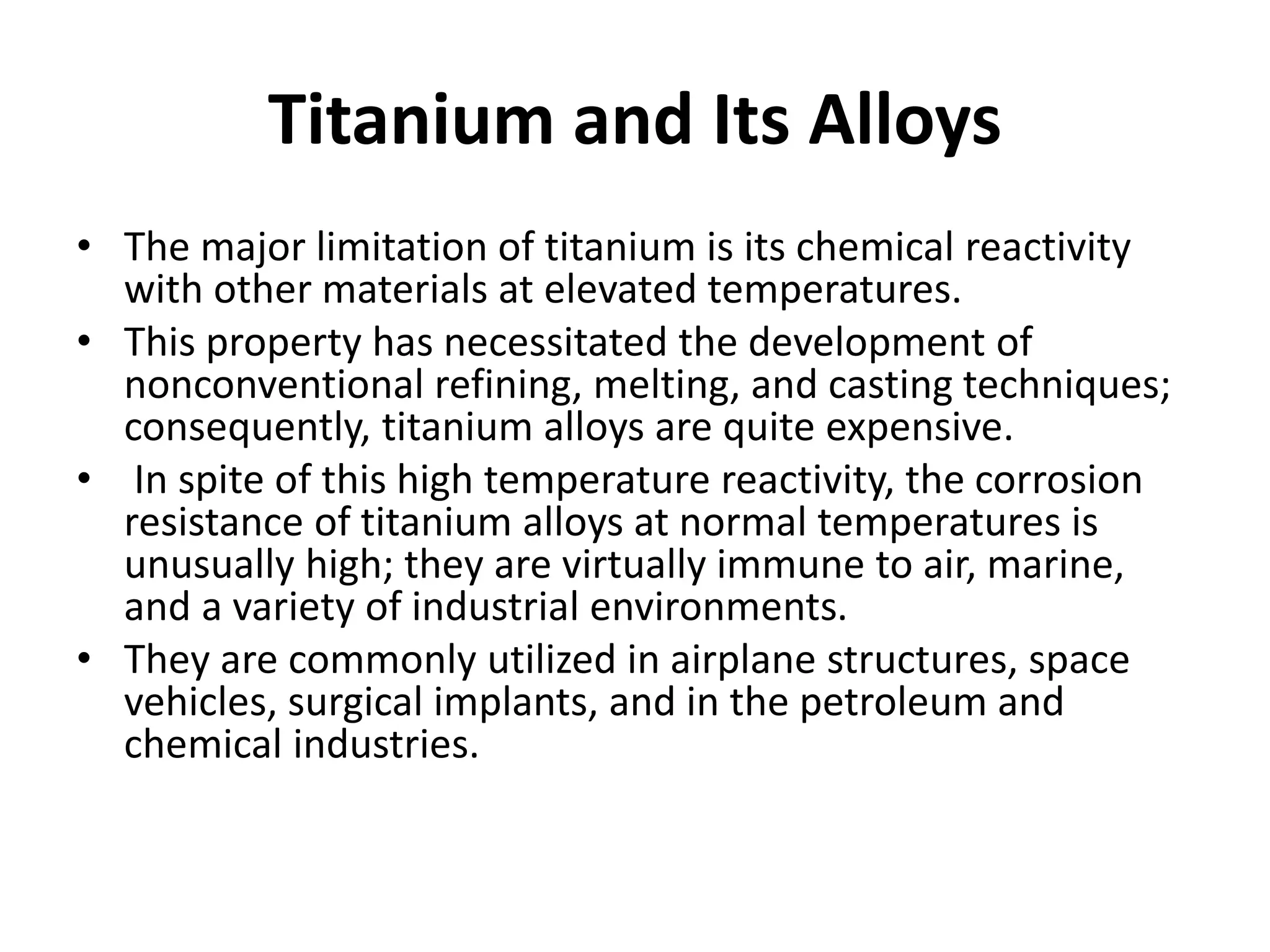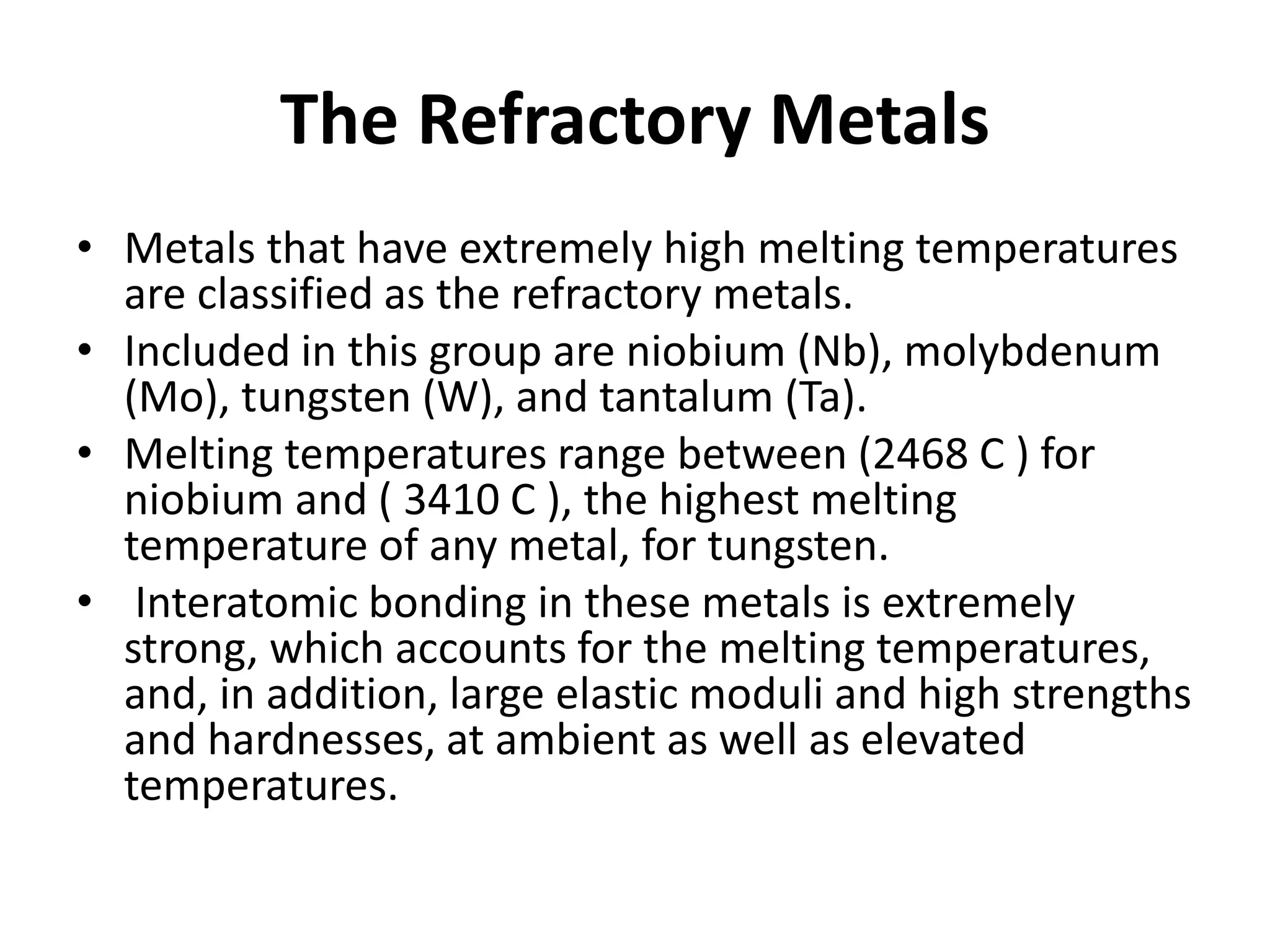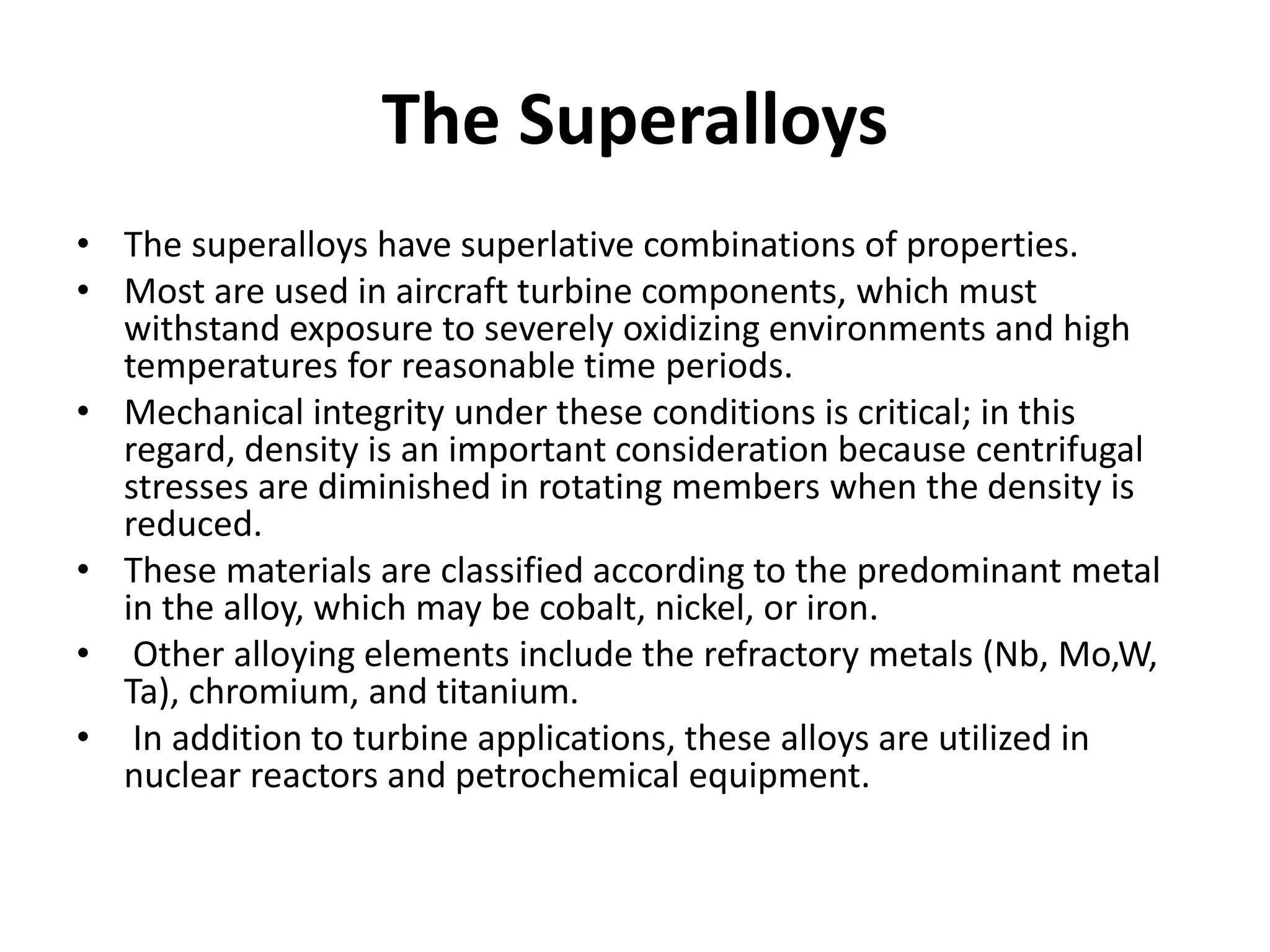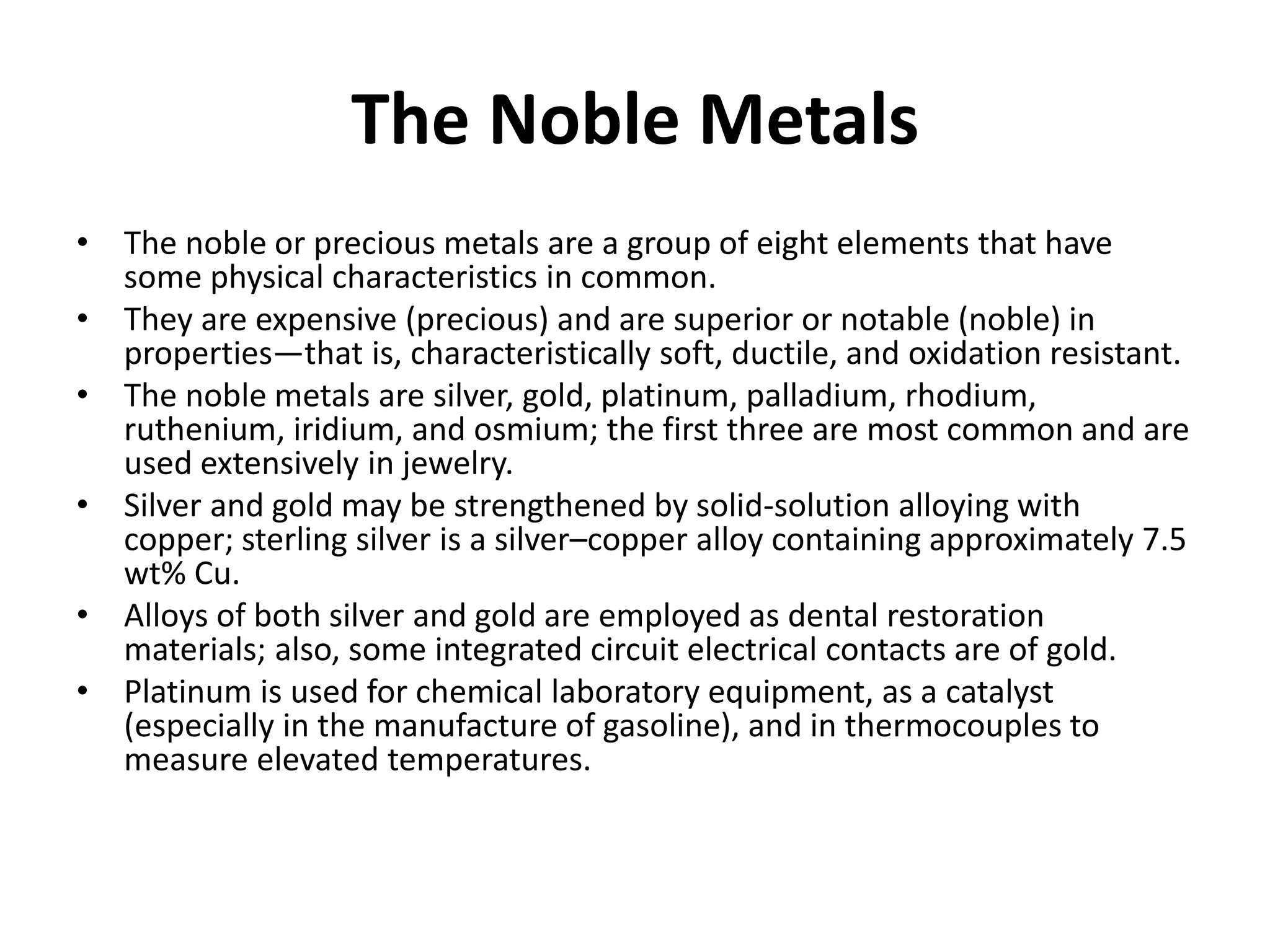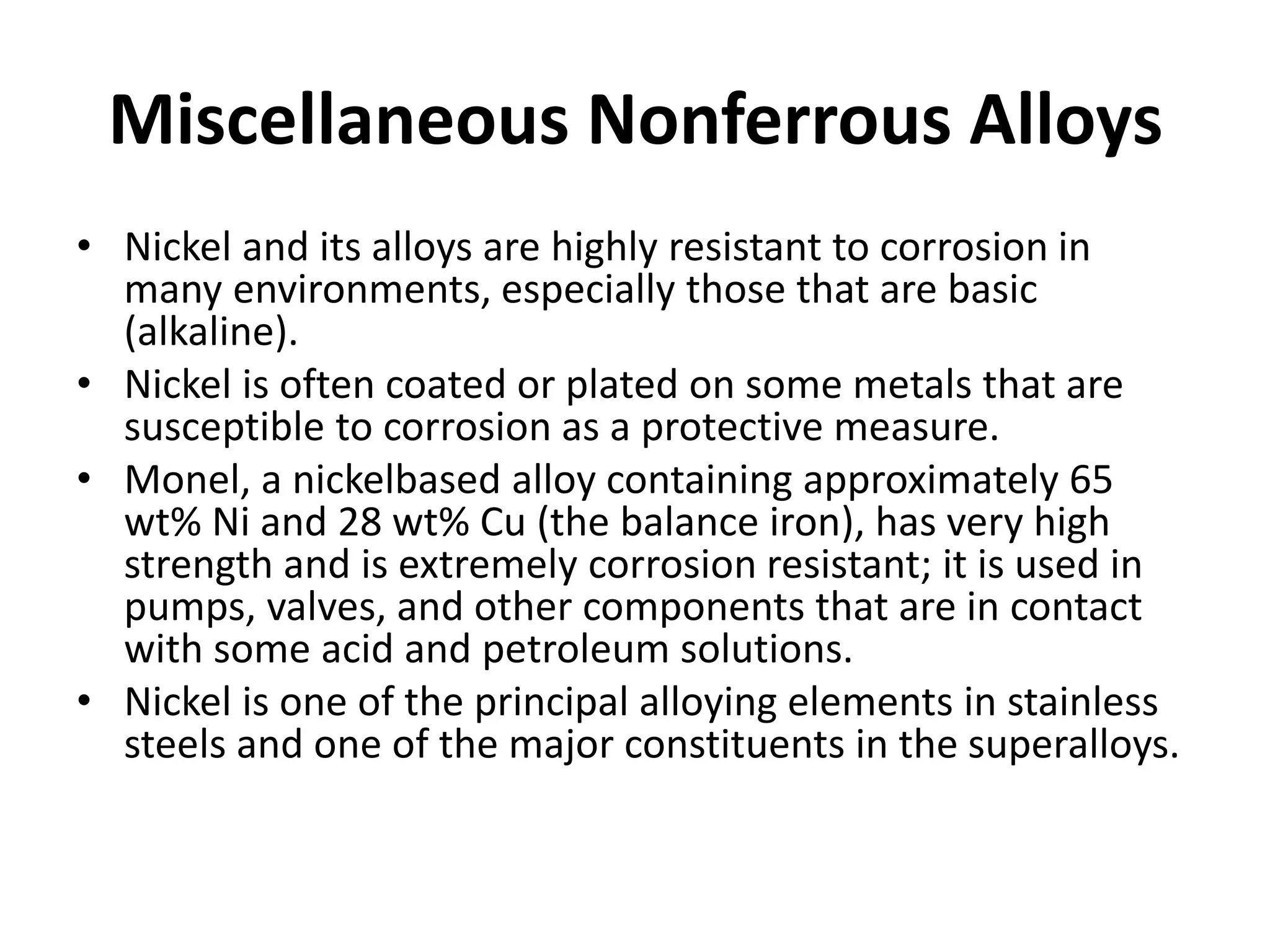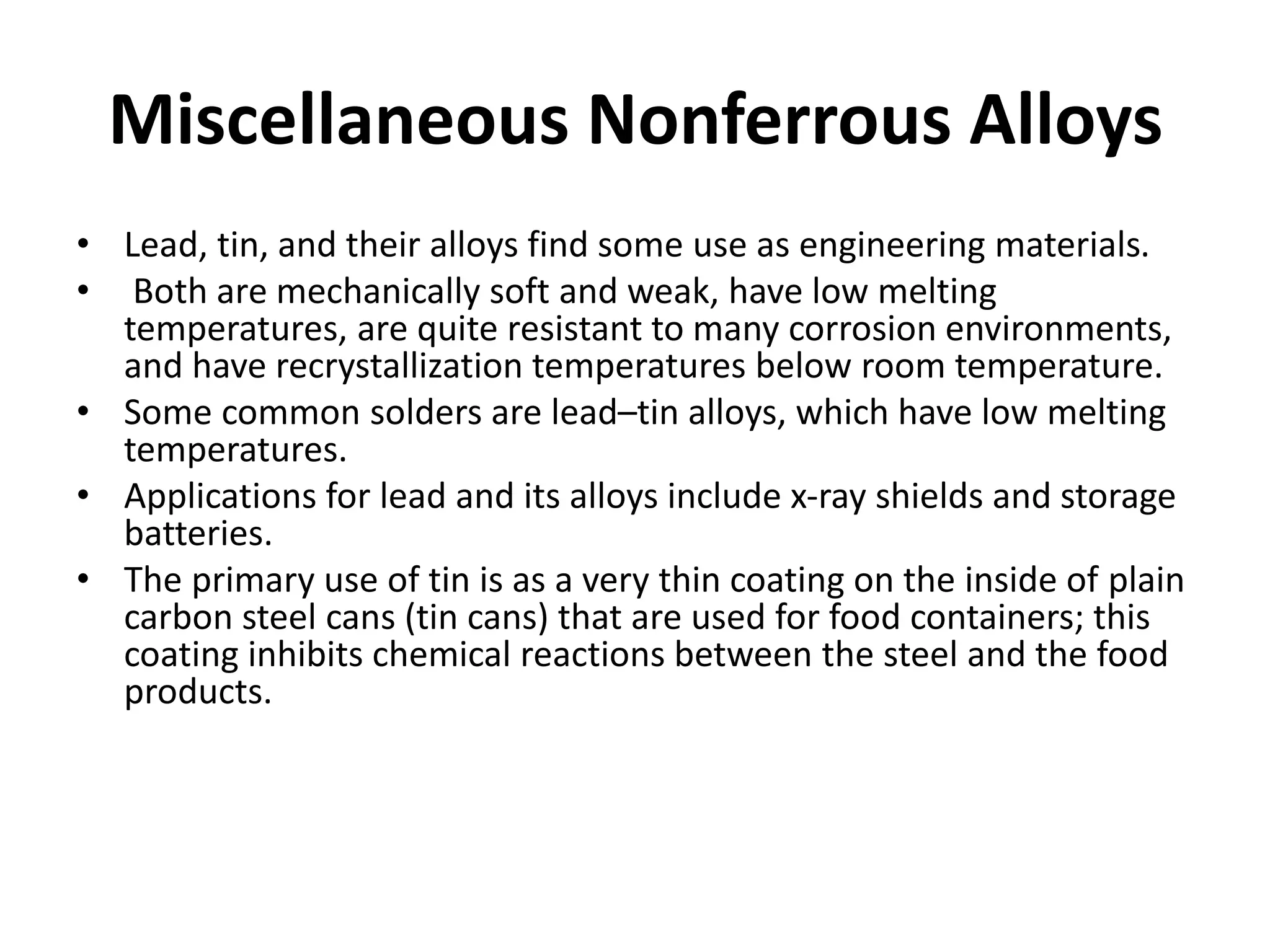This document provides an overview of the course contents for an Engineering Materials course. It discusses topics that will be covered including properties of materials like metals, ceramics, polymers and composites. Specific metal alloys that will be covered include iron and steel, copper alloys, aluminum alloys, magnesium alloys, titanium alloys and refractory metals. Corrosion, electrochemistry and material selection criteria are also included.
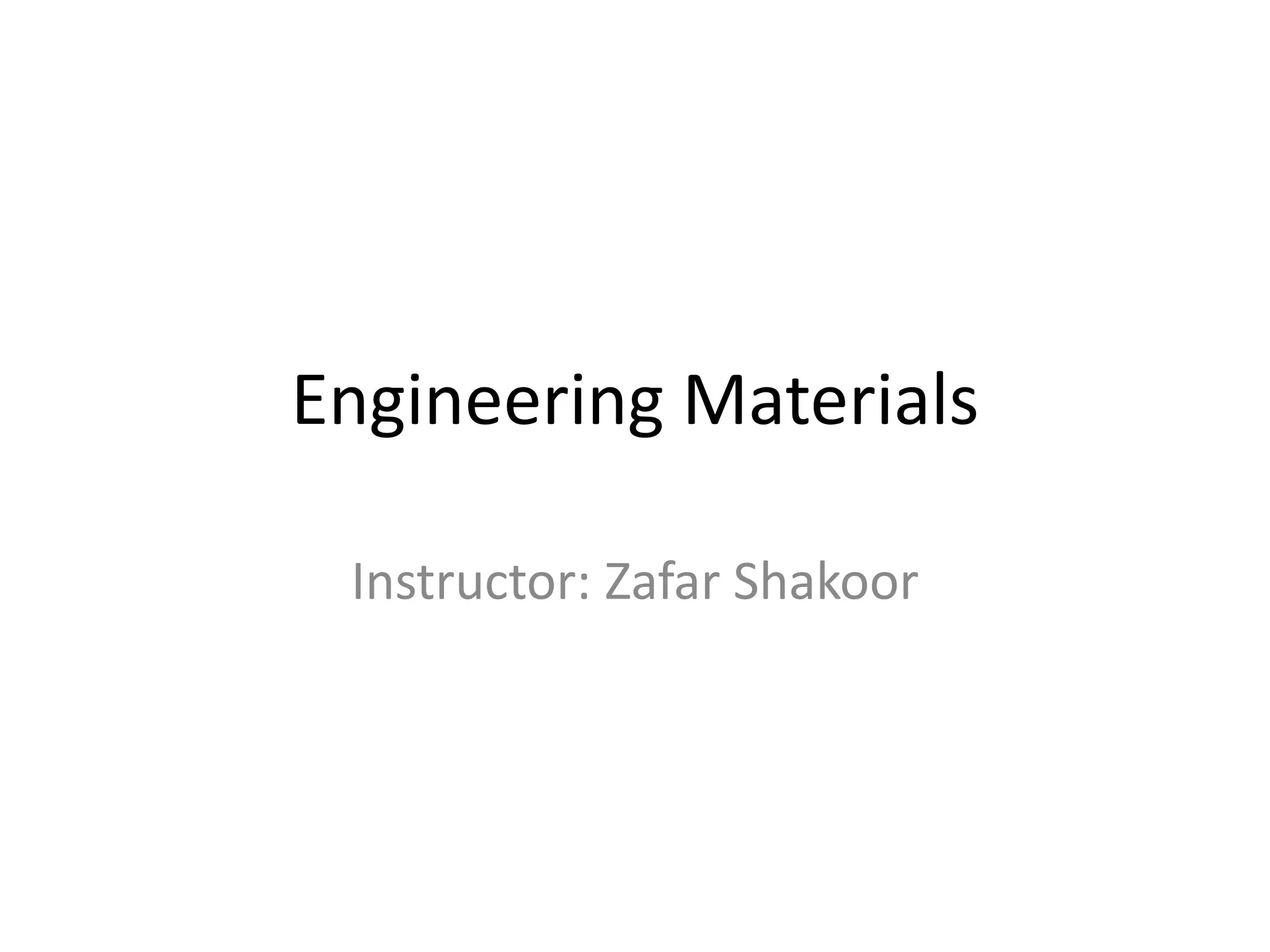

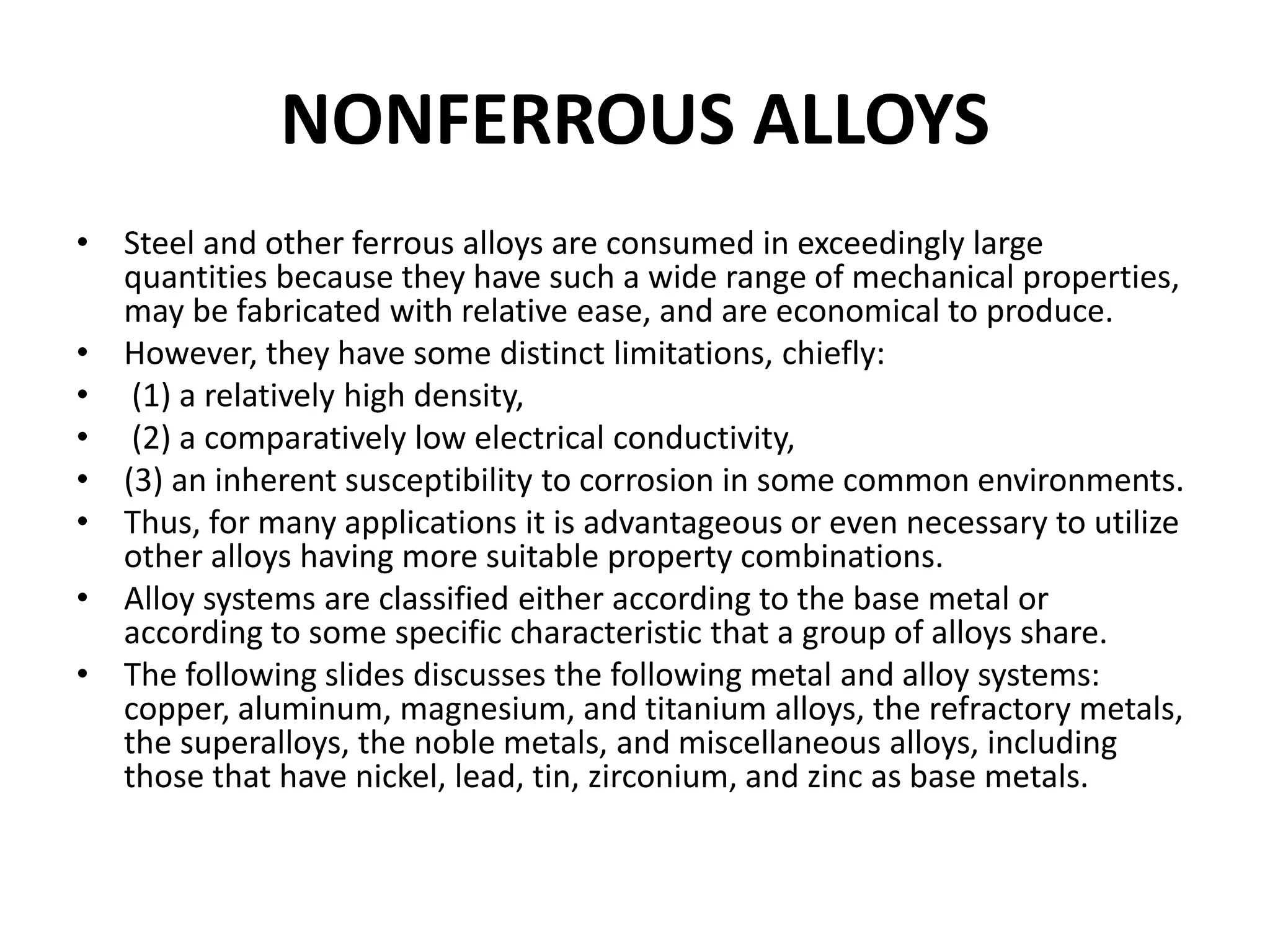
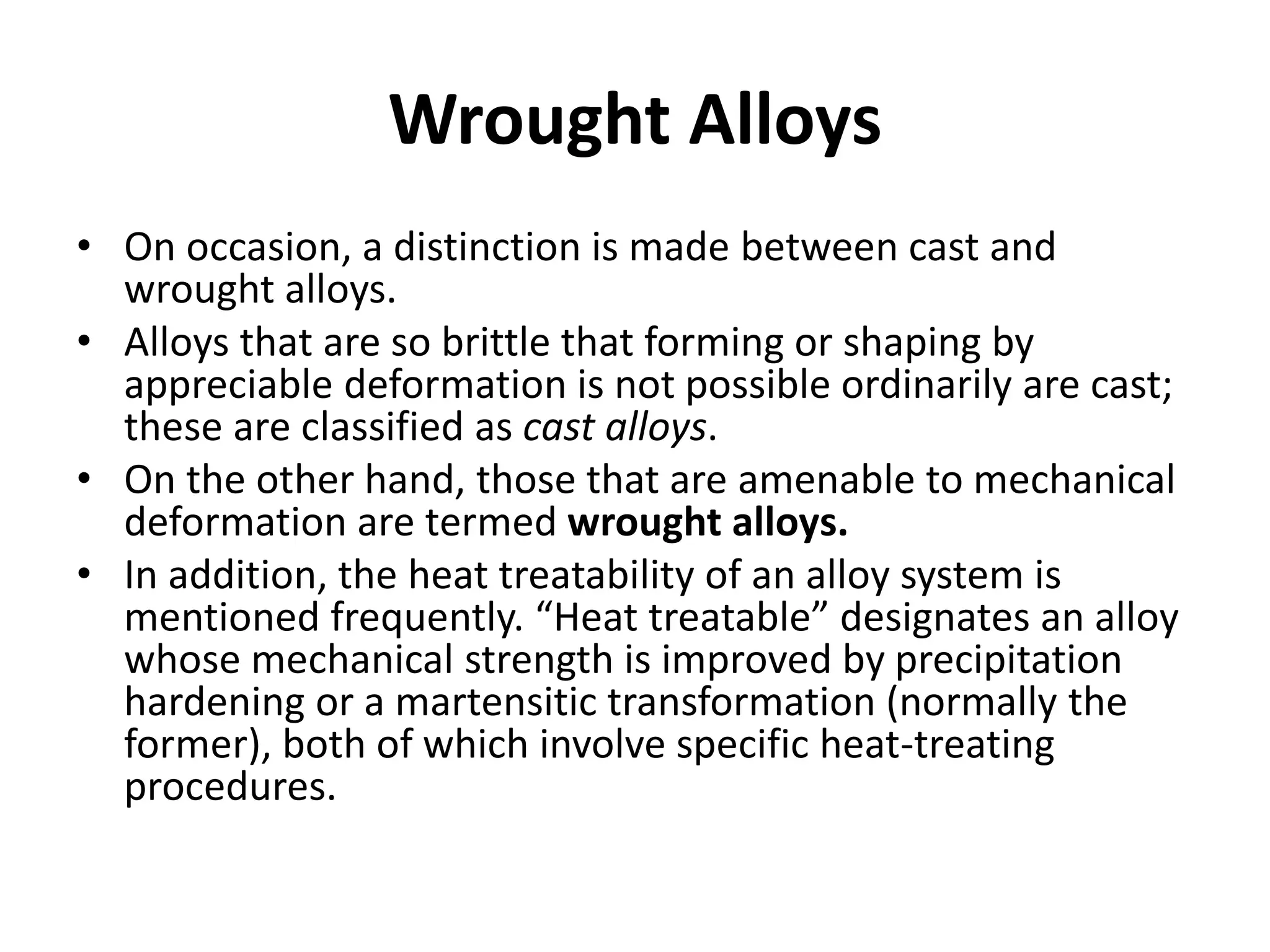
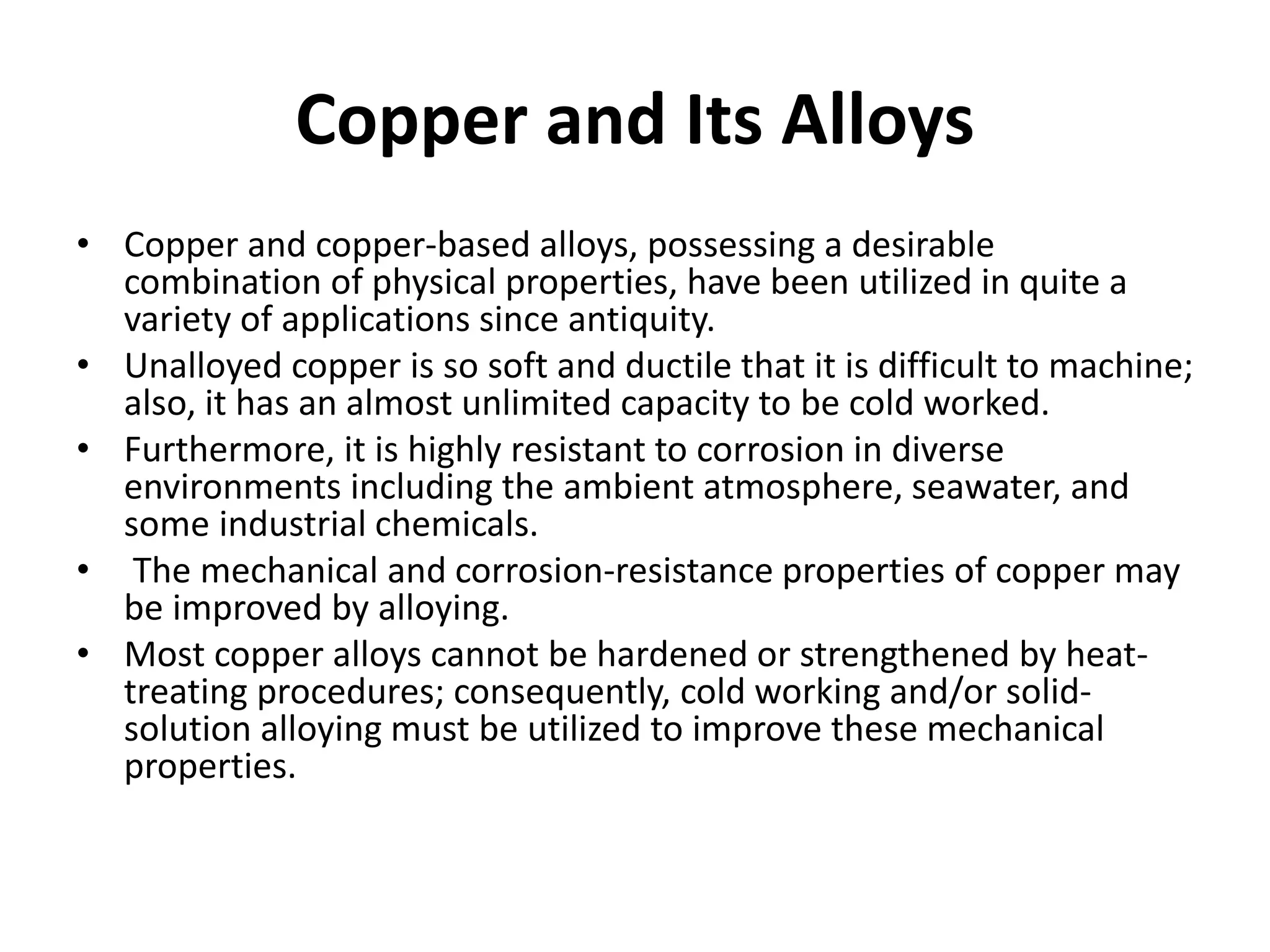
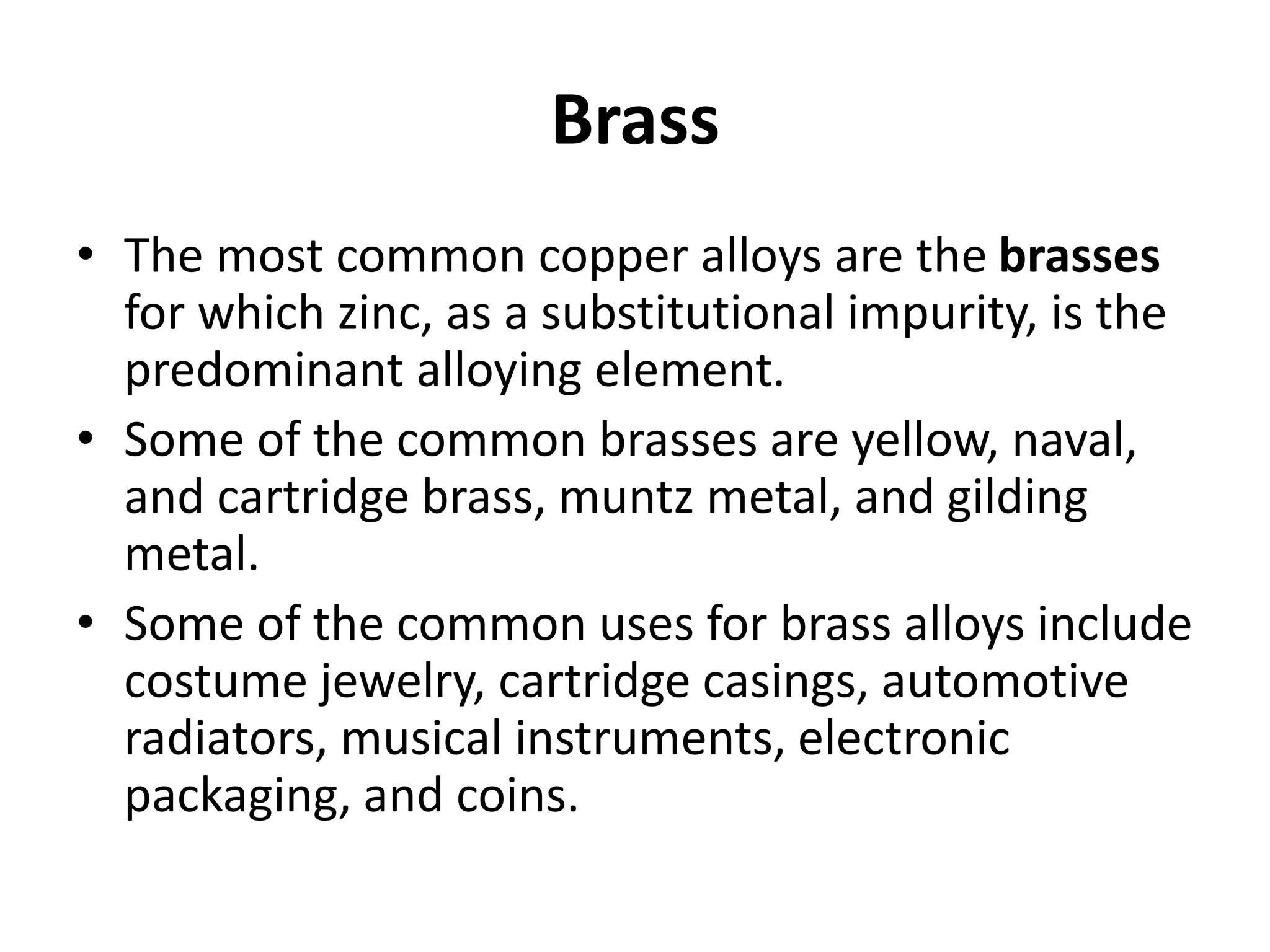
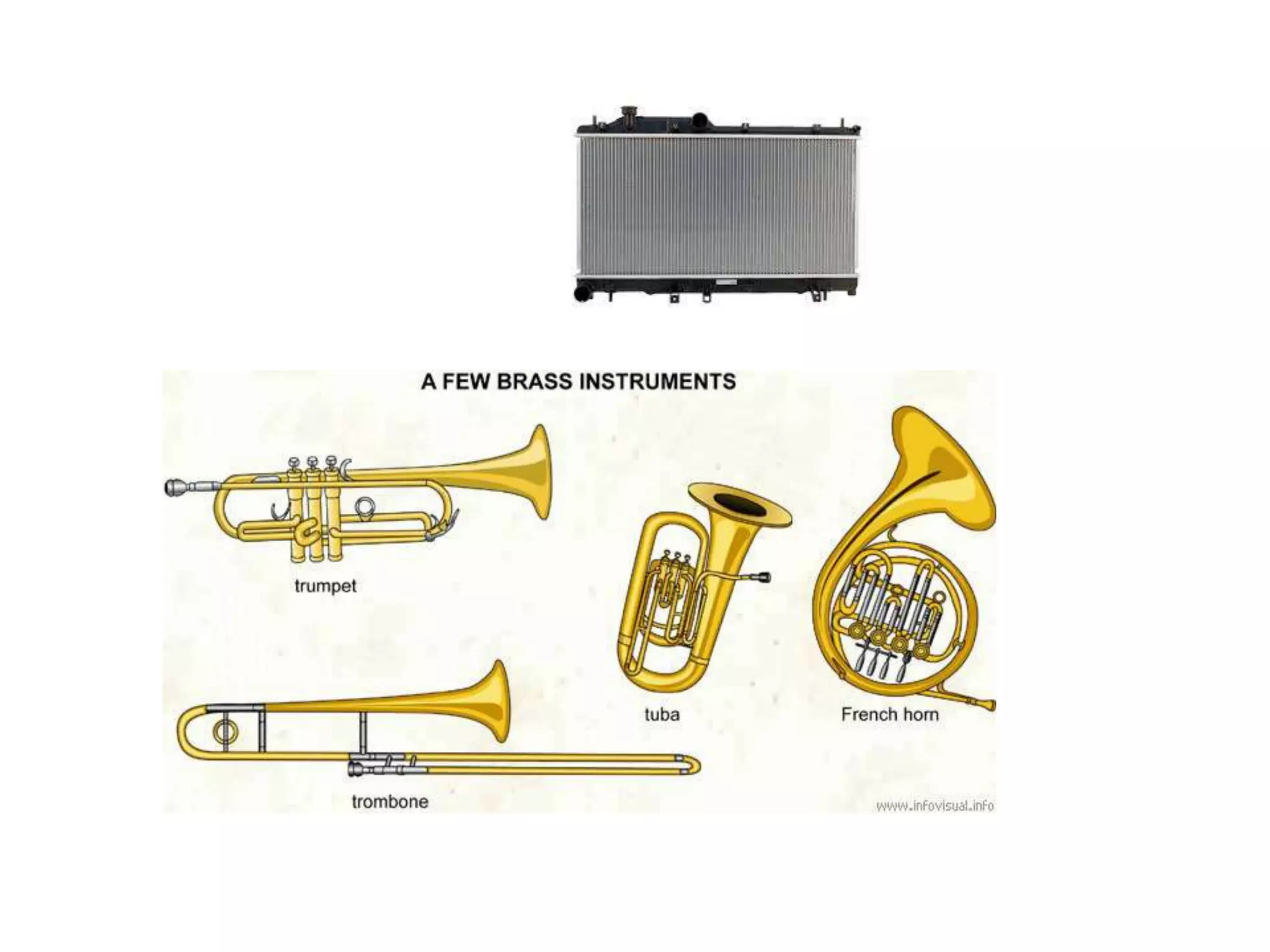
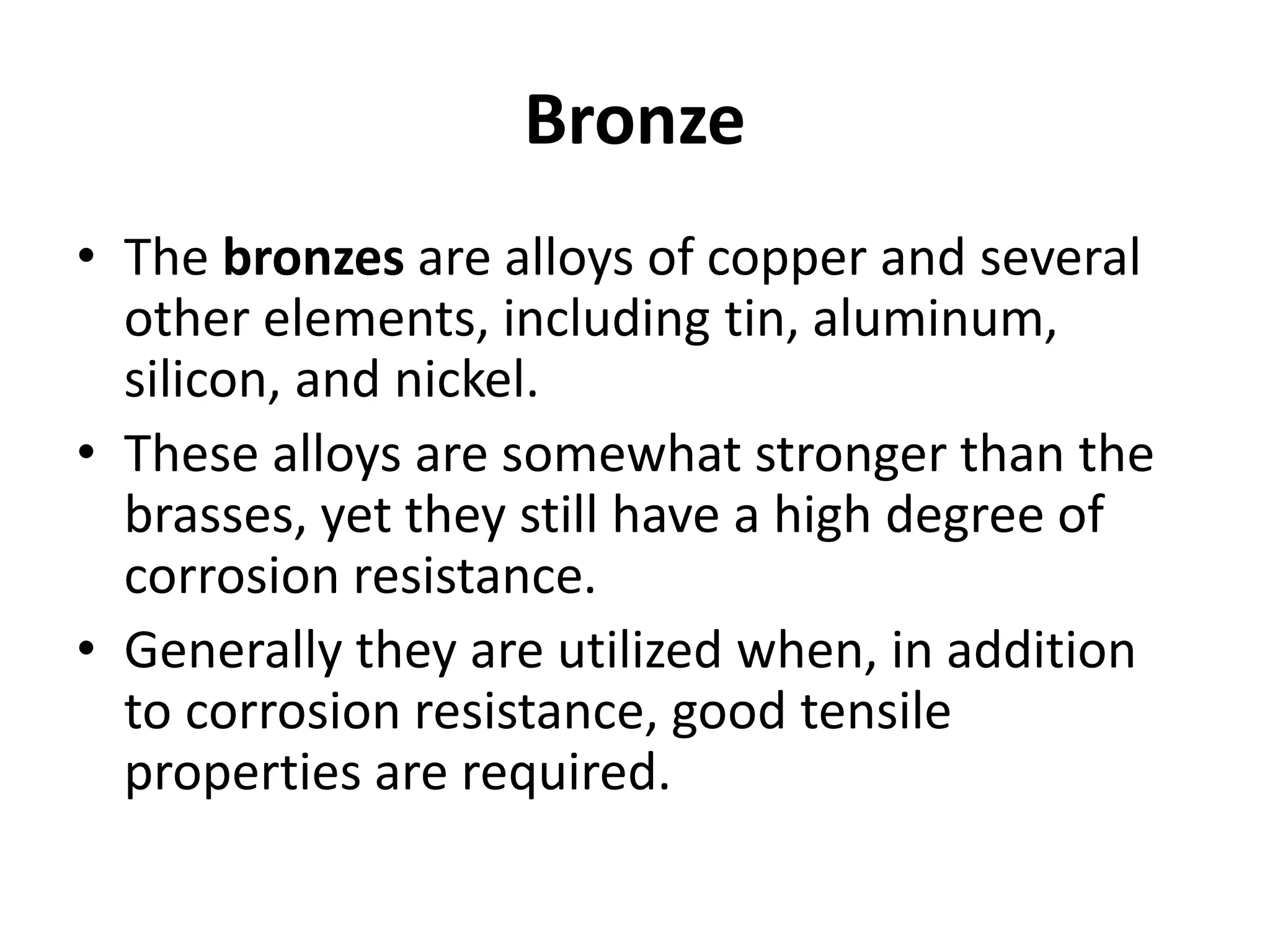
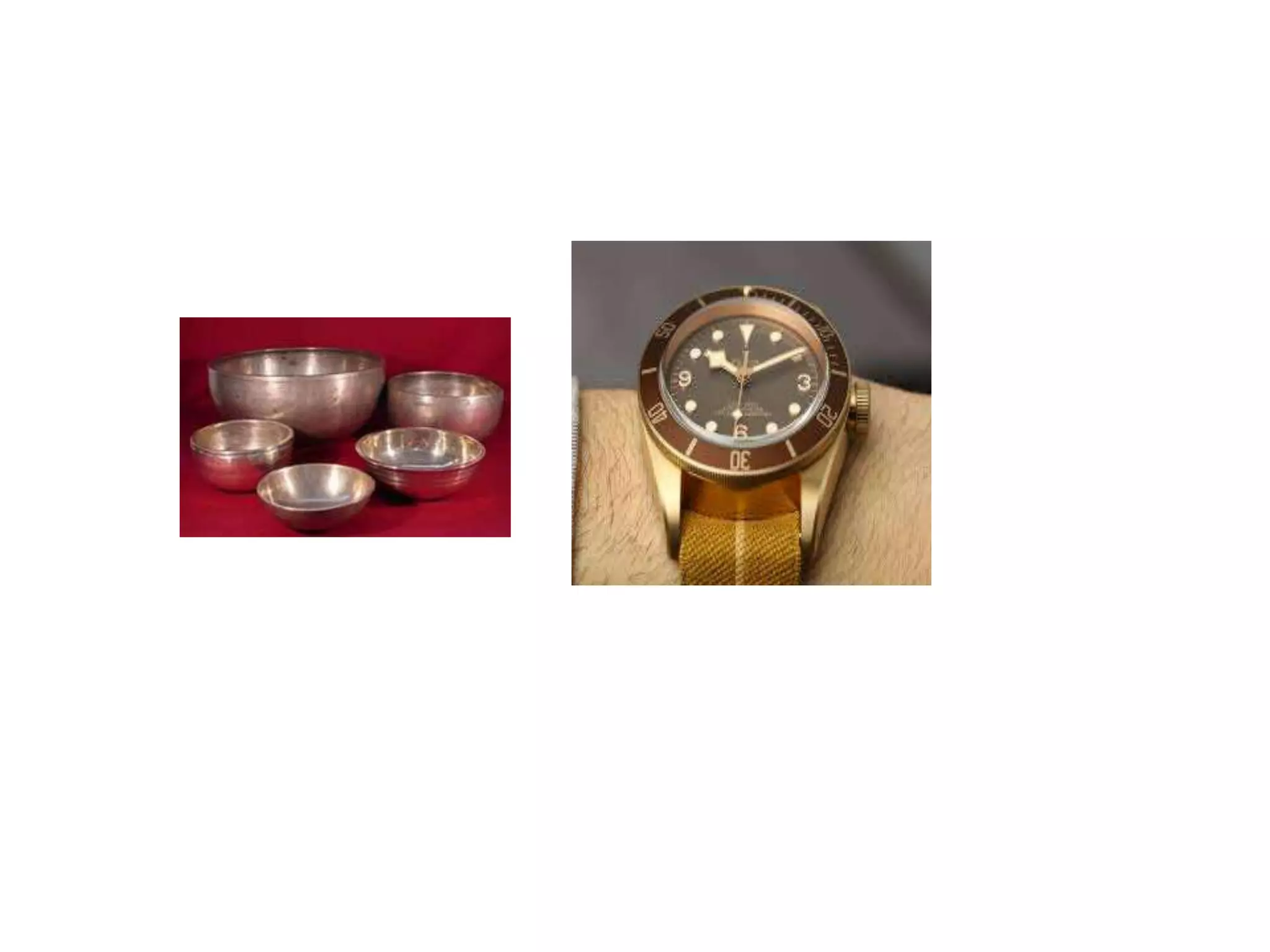
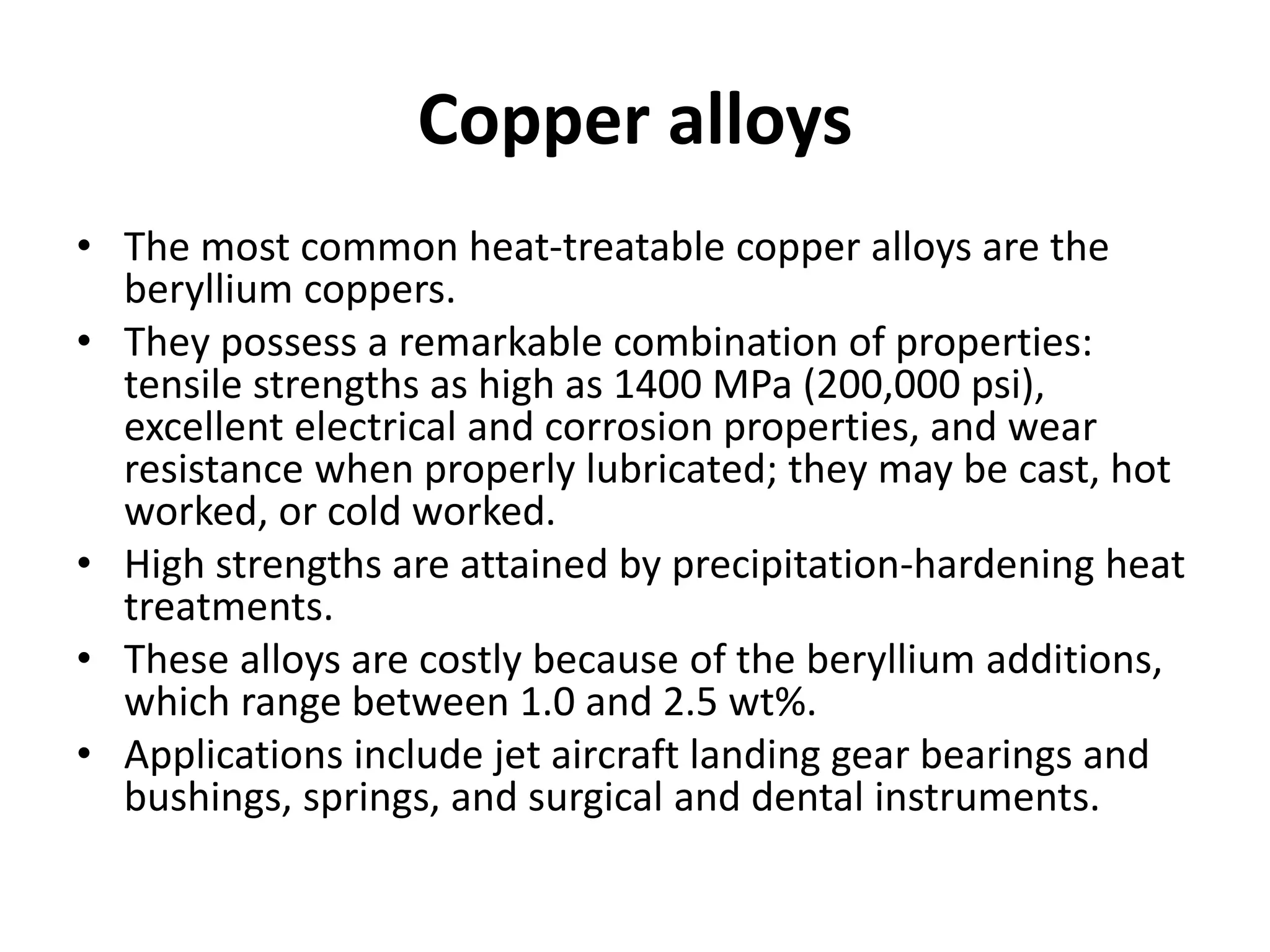
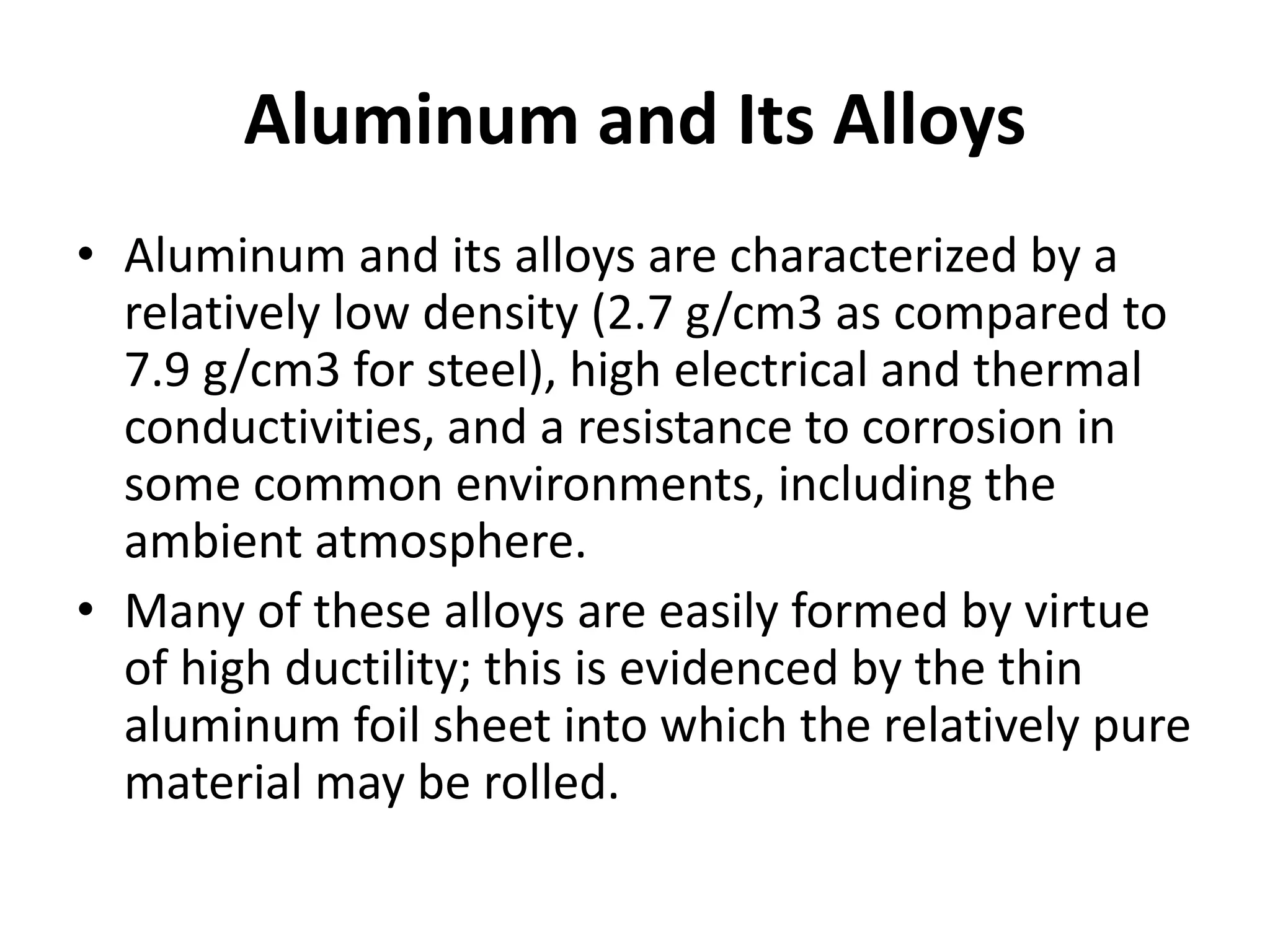
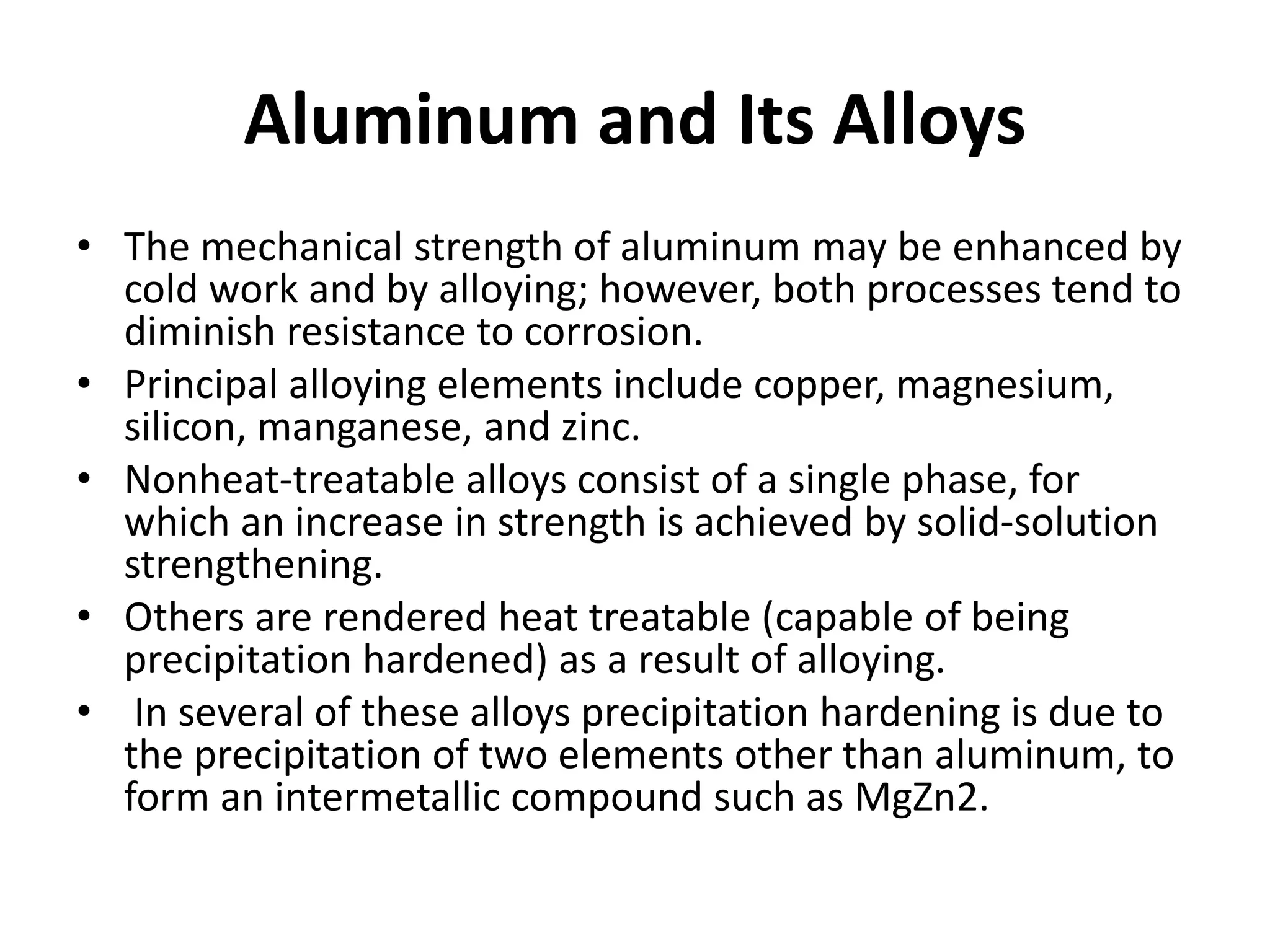
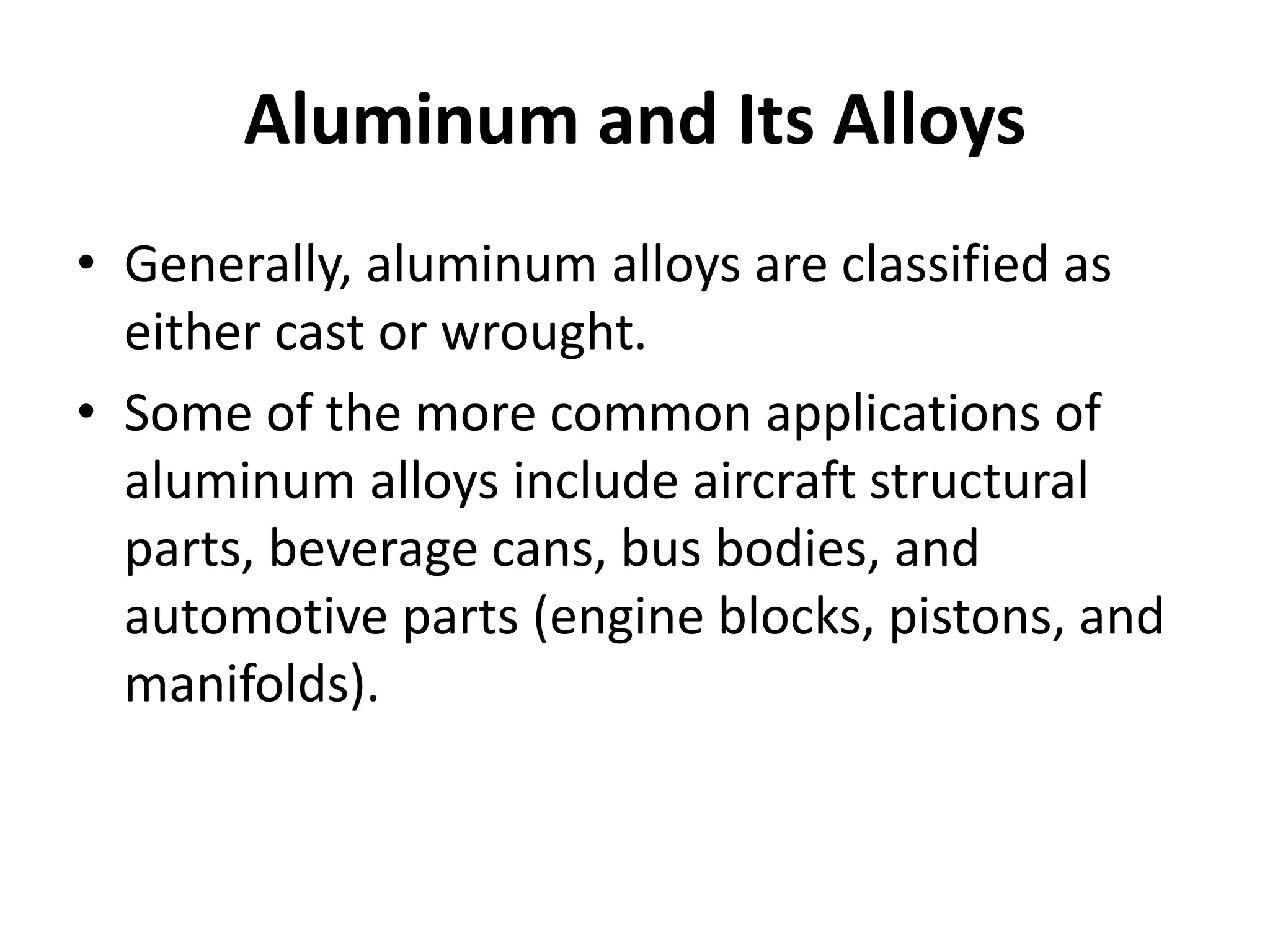

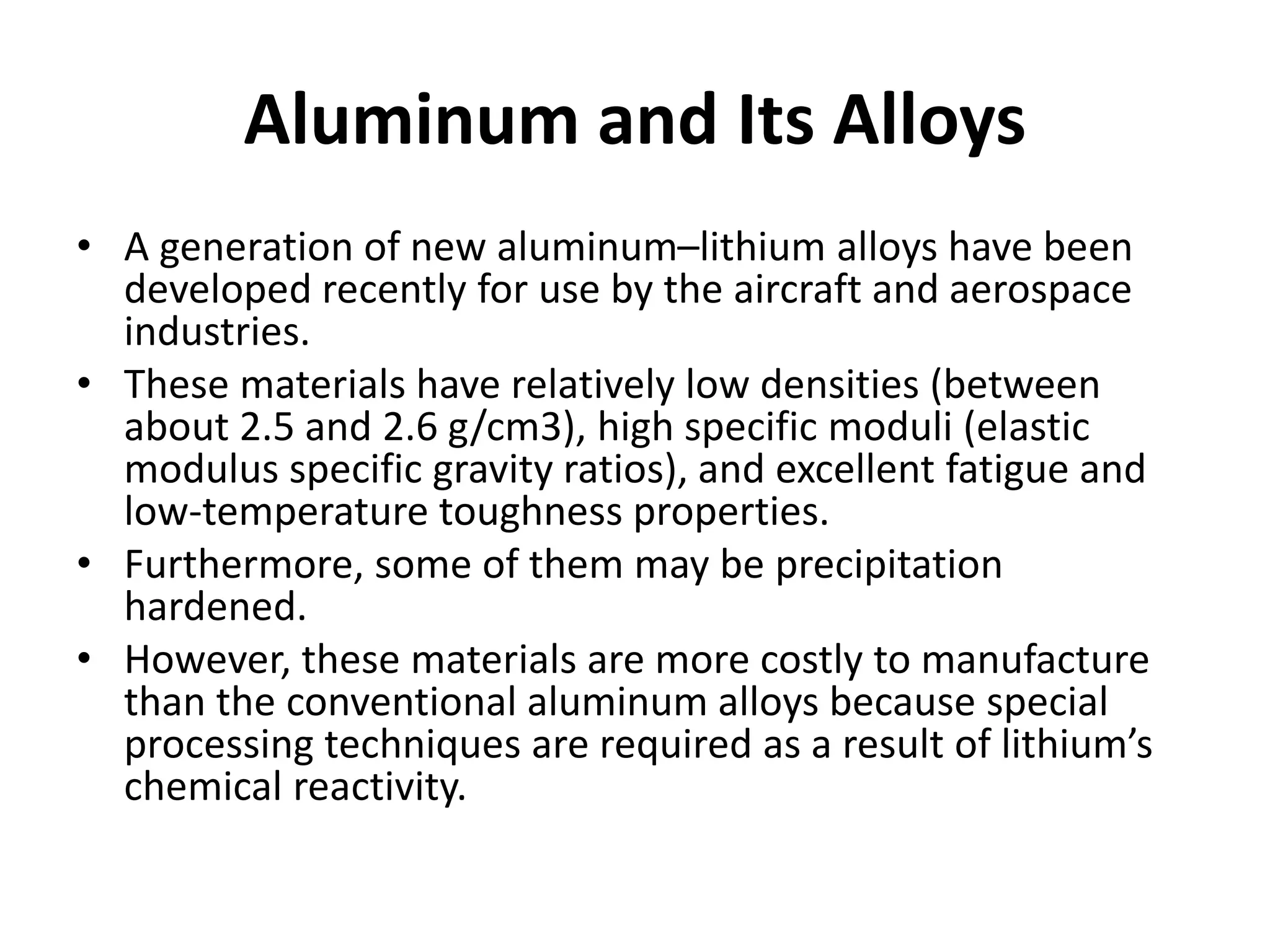
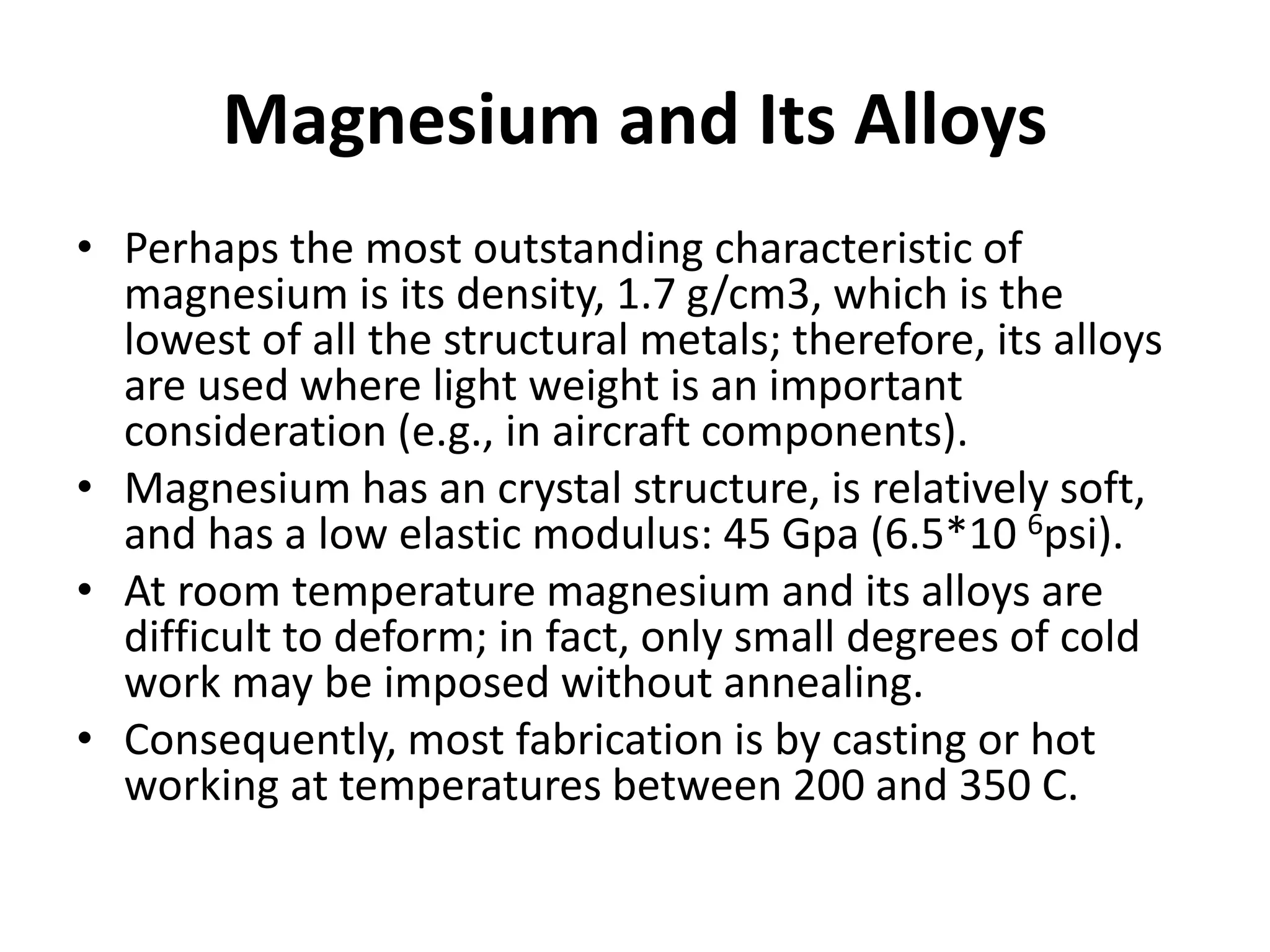
![Magnesium and Its Alloys
• Magnesium, like aluminum, has a moderately low
melting temperature [ ( 651 C)].
• Chemically, magnesium alloys are relatively unstable
and especially susceptible to corrosion in marine
environments.
• On the other hand, corrosion or oxidation resistance is
reasonably good in the normal atmosphere; it is
believed that this behavior is due to impurities rather
than being an inherent characteristic of Mg alloys.
• Fine magnesium powder ignites easily when heated in
air; consequently, care should be exercised when
handling it in this state.](https://image.slidesharecdn.com/engineeringmaterials05-170419124040/75/Engineering-materials-17-2048.jpg)

![Titanium and Its Alloys
• Titanium and its alloys are relatively new engineering
materials that possess an extraordinary combination of
properties.
• The pure metal has a relatively low density (4.5
g/cm3), a high melting point [1668 C ], and an elastic
modulus of 107 GPa ( psi).
• Titanium alloys are extremely strong; room
temperature tensile strengths as high as 1400 MPa
(200,000 psi) are attainable, yielding remarkable
specific strengths.
• Furthermore, the alloys are highly ductile and easily
forged and machined.](https://image.slidesharecdn.com/engineeringmaterials05-170419124040/75/Engineering-materials-19-2048.jpg)
